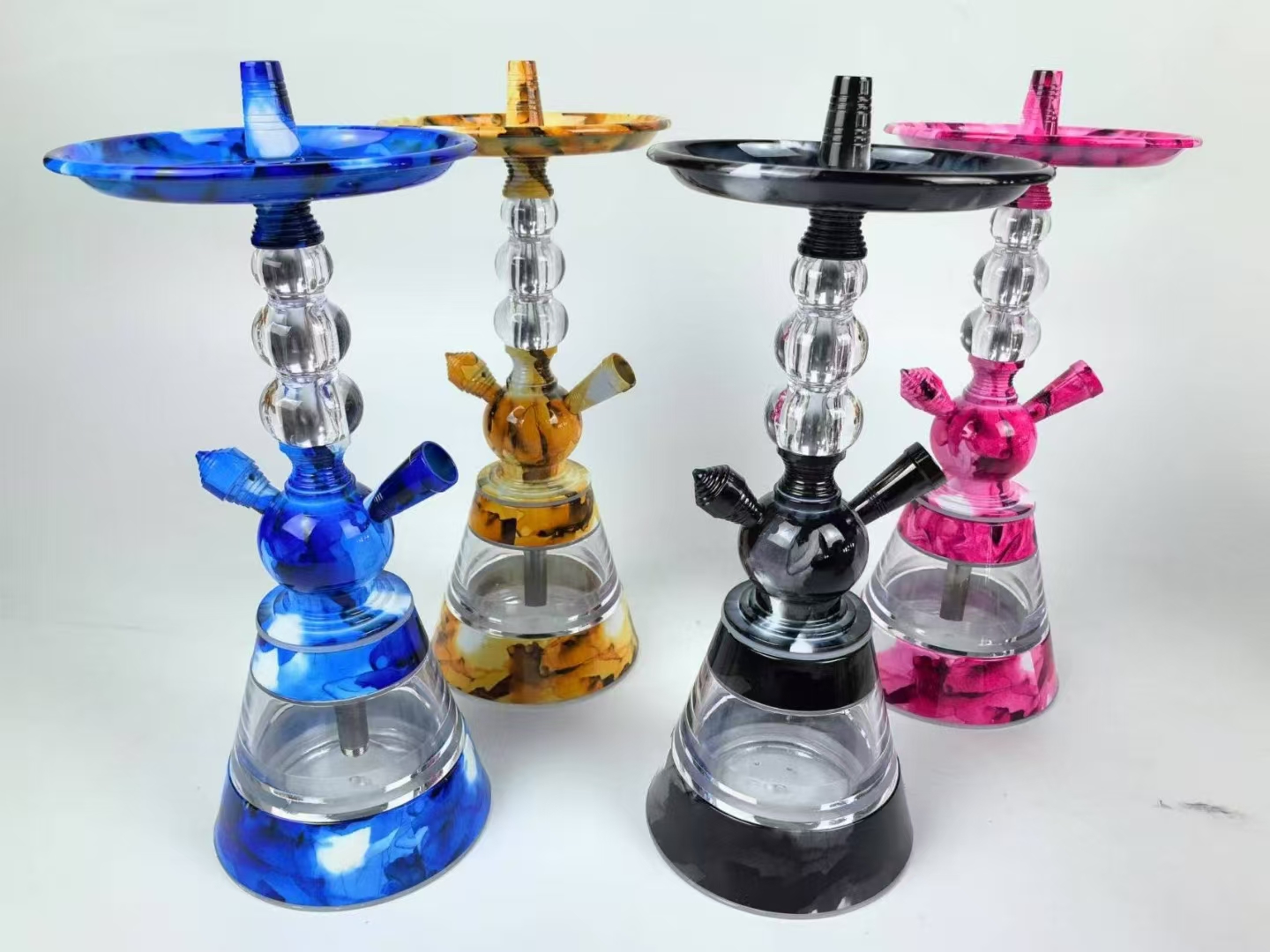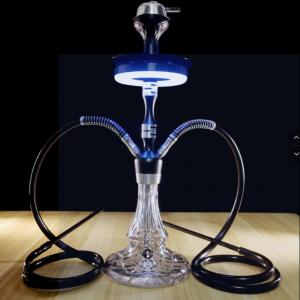The Arabic hookah, also known as a shisha or narghile, and modern hookahs share the same fundamental purpose—smoking flavored tobacco through a water filtration system—but they differ significantly in design, materials, functionality, and cultural context. Below is a detailed comparison of the two:
1. Design and Aesthetics
- Arabic Hookah: Traditional Arabic hookahs are often handcrafted with intricate designs, reflecting cultural artistry from regions like the Middle East, North Africa, or South Asia. They feature ornate metalwork (brass, copper, or silver) and glass bases decorated with patterns or calligraphy. The aesthetic is rooted in heritage, prioritizing elegance and tradition.
- Modern Hookah: Modern hookahs emphasize sleek, minimalist designs and portability. They often incorporate contemporary materials like anodized aluminum, stainless steel, or acrylic, with clean lines and vibrant colors. Many are designed for easy assembly and customization, appealing to a global, trend-conscious audience.
2. Materials
- Arabic Hookah: Typically made from natural materials such as glass, brass, copper, or wood. The hoses are often leather or woven fabric, and the bowl is usually clay. These materials are durable but require careful maintenance to prevent corrosion or wear.
- Modern Hookah: Utilizes synthetic and industrial materials like silicone for hoses (which are washable and flexible), tempered glass or acrylic for bases, and stainless steel or aluminum for stems. These materials are more resistant to rust and easier to clean, catering to convenience.
3. Functionality
- Arabic Hookah: Designed for communal smoking sessions, traditional hookahs often have multiple hoses to accommodate several users simultaneously. The smoking experience is slower-paced, with a focus on flavor and ritual. However, they may lack modern features like adjustable airflow or diffusers for smoother draws.
- Modern Hookah: Engineered for efficiency and user-friendliness, modern hookahs often include features like purge valves for easy smoke clearing, diffusers for quieter operation, and single-hose systems for better hygiene. Some models are compact or collapsible, making them travel-friendly. Advanced models may even integrate LED lights or electronic heating systems.
4. Tobacco and Heat Management
- Arabic Hookah: Traditionally uses natural charcoal and molasses-based tobacco (mu‘assel) flavored with fruits or spices. Heat management relies on manual techniques, such as rotating coals, which require skill to maintain consistent smoking temperature.
- Modern Hookah: While still compatible with traditional tobacco, modern hookahs often use quick-lighting charcoal or electric heat management systems for convenience. Some users opt for herbal or nicotine-free alternatives. Modern bowls and heat management devices (e.g., lotus or funnel bowls) allow for precise control of heat and longer sessions.
5. Cultural Context and Usage
- Arabic Hookah: Deeply rooted in Middle Eastern and South Asian cultures, the Arabic hookah is a symbol of hospitality and social bonding. It is commonly used in cafes or homes during leisurely gatherings, accompanied by tea or conversation, with an emphasis on tradition and ritual.
- Modern Hookah: Popular globally, especially among younger audiences, modern hookahs are often associated with hookah lounges, social events, or recreational use. The focus is less on cultural tradition and more on lifestyle, with an emphasis on personalization, portability, and trendy aesthetics.
6. Portability and Maintenance
- Arabic Hookah: Traditional hookahs are often large, heavy, and less portable due to their intricate construction. Maintenance is labor-intensive, as materials like brass or copper require regular polishing, and glass bases are fragile.
- Modern Hookah: Designed for portability, modern hookahs are lightweight and often come with carrying cases. Their materials are low-maintenance, with detachable parts that are easy to clean, making them more practical for frequent use.
Summary
In essence, the Arabic hookah embodies cultural heritage, craftsmanship, and communal tradition, with a focus on aesthetic beauty and ritualistic smoking. In contrast, the modern hookah prioritizes convenience, portability, and technological enhancements, catering to a global audience seeking a customizable and low-maintenance smoking experience. While both deliver the core hookah experience, their differences reflect evolving user preferences and technological advancements.

